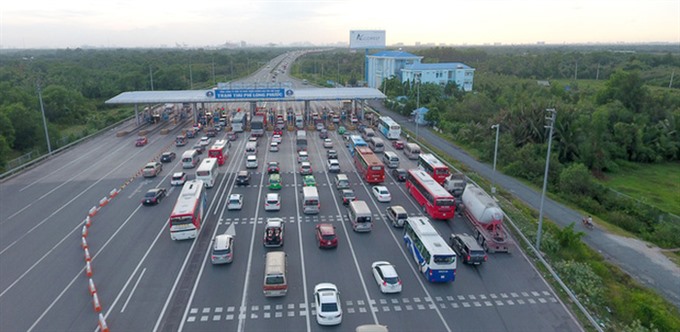 Society
Society

Nguyễn Danh Huy, general director of the transport ministry’s Public-Private Partnership Investment Project Management Department, speaks to Tuổi trẻ (Youth) newspaper about measures to attract investors to participate in BOT projects.
 |
Resolution 20 lays out plans for building certain sections of the North-South expressway in the east during the 2017-20 period. Why has it increased the rate of owner’s equity for investors participating in the project from 15 per cent to at least 20 per cent of the total investment capital?
In principle, as the owner’s equity rate is higher, it is easier for credit institutions to provide capital for the project. But it would also lead to an increase in investment costs for the project as the benefit ratio of the owners’ equity will be higher than the interest rate of banks. In financial terms, this rate of owners’ equity of investors is called the financial leverage ratio. The 20 per cent increase takes into account the ability to mobilise credit sources and capital costs of the project.
Resolution 20 stipulates that the benefit of the owners’ equity of investors should be equal to the average benefit of other BOT road projects that have been implemented in the past. The official benefit ratio will be defined through competitive bids. Will it be attractive to investors?
Regarding bidding, a circular of the Ministry of Finance instructs that investors’ benefit should be the average benefit of businesses operating in a corresponding sector. But it is difficult to calculate the average benefit. The Ministry of Transport consulted the World Bank and the Asian Development Bank and they gave a benefit ratio of 17-19 per cent. Some people said the rate is high while some said the rate is low so we decided to define the benefit ratio through bidding. However, it still must follow a legal framework so we propose to use the average benefit rate of BOT projects that have already been implemented. In fact, with 67 BOT projects that the ministry has implemented over the past time, the average benefit was 11.77 per cent.
Investors want high benefits but the given benefit ratio is in line with current regulations. If the benefit rate is too low, investors will not want to join. But it is also likely that investors may submit a tender with a benefit rate lower than we estimate. However, we have yet to organise any bids so it is difficult to assess whether the benefit ratio is high or low.
So the North-South expressway project will select investors through bidding and investors must accept the game?
That’s right. The bidding price depends on total investment capital calculated on technical design and estimation. An investor that makes a bid with a price lower than that ceiling price will win. The bidding value is the final settlement and investors must accept it in case of gains or losses. If investors apply technology and new materials, it will lead to an increase or decrease in project costs, which means they will suffer losses or enjoy benefits. The transport ministry only supervises technical measures and ensures project quality.
With public-private partnership investment, the State only manages output quality. It means that the road you build must meet certain criteria. You can gain benefits by changing construction methods and applying technology to reduce cost. So it will help to promote investors’ creativity.
Does it mean that the technical design and cost estimate must be done as close to accurate as possible?
The transport ministry is responsible for making and approving technical design and cost estimates in line with current regulations and must take legal responsibility for that. Besides, it is an international bidding project so the Government set up an interdisciplinary task force including representatives from relevant ministries, agencies, experts and localities where the expressway will run through to ensure transparency and project quality.
How will the State investment of VNĐ55 trillion (US$2.42 billion) be used?
The money will be used for consultancy tasks in the technical design process, consultancy in project quality assessment during the construction process, land clearance and resettlement and other aspects.
Are any investors showing interest in projects that the transport ministry has announced?
As scheduled, the feasibility study report will be approved at the end of September in order to issue documents calling for bidding at year end. After we set a shortlist, a bidding is scheduled to be held in May next year to select investors. At that time, we will know exactly how many investors are interested in our projects.
After a series of public reactions against BOT projects, some people worry that investors are not interested in BOT projects. Will that affect the progress of expressways?
The Government anticipated the situation and submitted to the National Assembly for approval a policy to ensure that investors will not be affected by the situation. Besides, the expressways are built completely new and people will pay depending on the number of kilometres they use and fees are only collected on roads we built so we will get support from people.
In case no investor joins the projects, we will report to the National Assembly for making decisions. Our aim is not to intervene too deeply but let the market decide. If the bidding is unsuccessful, we will review State support policies and risk sharing measures to see whether they are appropriate. If not, we must improve these policies. This is the market and bargain of both sides to reach an agreement so it is necessary to increase projects’ attractiveness to encourage investors to join. — VNS




